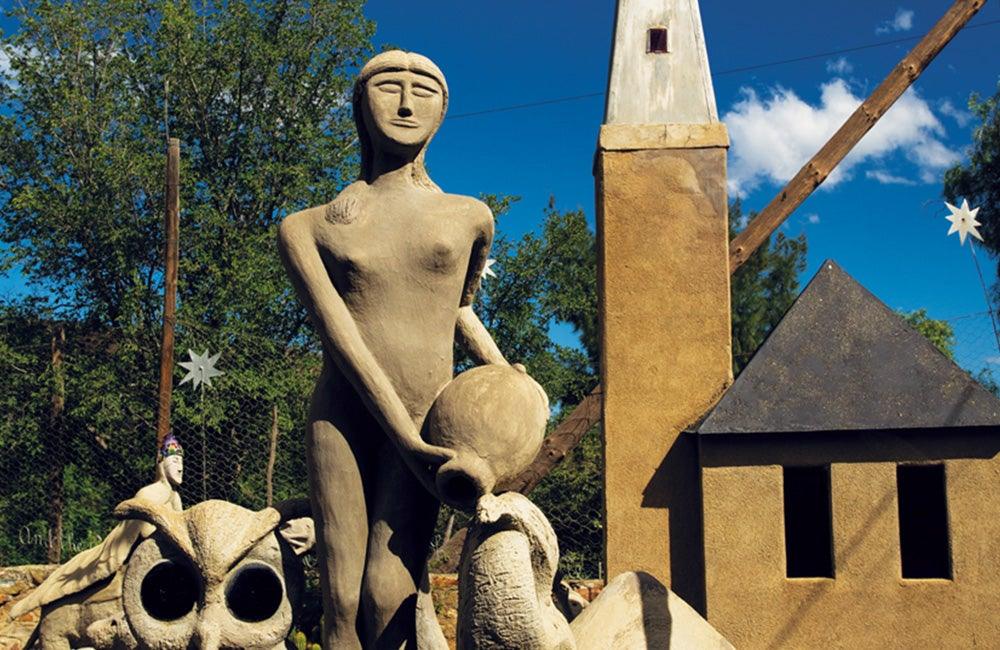First published: Fall 2018
Helen Martins created her own version of Paradise and the Holy Land in the isolated, desert region of Karoo, South Africa
Helen Martins was born in 1897 in the small Karoo village of Nieu-Bethesda in South Africa, nestled in a valley on a high plateau. Agricultural crops and animals grazing in fields intersperse the village homes. The Karoo is an arid region, but the valley has water. This changes everything. The life-bringing water wells up from a natural spring in the hills and is channelled in furrows to fields and homes. The village is a little oasis of lush and verdant growth. Trees can grow to truly impressive heights – something about the soil, the light and the water. This is a version of Paradisem and the place has a biblical feel: sheep graze in the fields, donkeys are employed for transport, there are unpolluted night skies, and the sunlight has a clarity and sparkle that is unusual in today’s world. The clock seems to have stopped in Nieu-Bethesda and the village is not so very different to when Martins was born.
Martins spent her childhood in Nieu-Bethesda. She went on to enrol in teacher training at the college in the nearest town, Graaff Reinett. She married a fellow teacher and they moved together to Volksrust, in the Mpumalanga region where both of them took jobs in the local school.
In his spare time, her husband wrote and directed plays and had an active interest in amateur dramatics. Martins was pulled into this world, performing in a number of his plays. The marriage did not last longer than three years, but Martins’ interest in the stage continued. For a brief period she joined a theatre company, touring and performing with them. It is therefore unsurprising that when, back in Nieu-Bethesda, she started to create her Owl House and Camel Yard, she employed all the skills of stage and theatre to bring to life her created world.
She had returned to her home village in her mid thirties to care for ageing and infirm parents, and she never left. Nearly ten years went by before the death of her father, her mother having passed away years earlier. The loss of her father was a form of liberation for her. She now owned the house and her time. She was free to do as she liked, so, working with the materials at hand and employing individuals from the local community to assist her, she began to build the environment that has made her well known – indeed, well known enough that a play and then a movie of the play have been made about her.
Some of the filming of the 1991 film of Athol Fugard’s play The Road to Mecca, based on Martins’ life, took place at The Owl House. The producer, Roy Sargeant, was sitting on the veranda when some coins fell down from one of the old beams, landing in his lap. I was there at the time. We all talked about the coincidence, some suggesting that Martins was sending a message – a blessing, we hoped. That night, the lights of the van carrying the filming equipment turned on by their own accord and would not turn off. An electric fault, no doubt, but we were a little sobered. It was not impossible to imagine that Martins was playing tricks, having a bit of fun at our expense. Someone said that The Owl House could be haunted by her spirit.
This is an article extract; read the full article in Raw Vision #99




